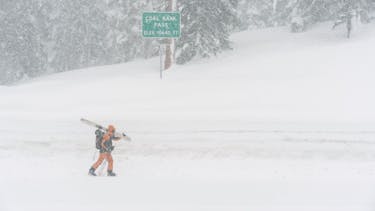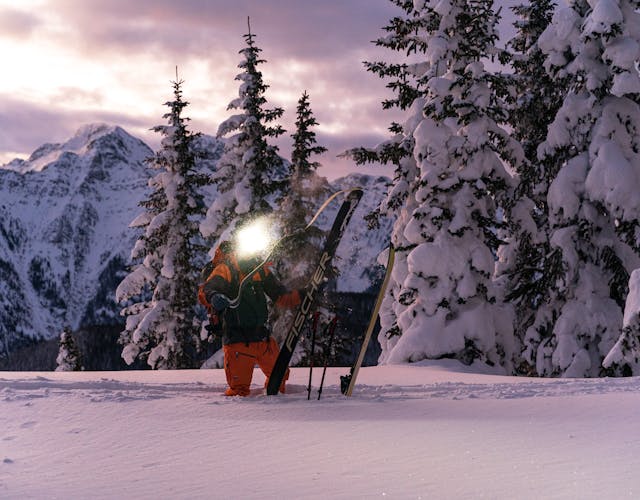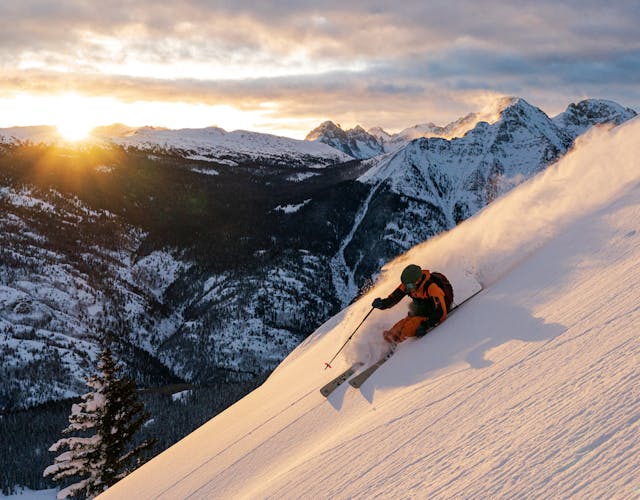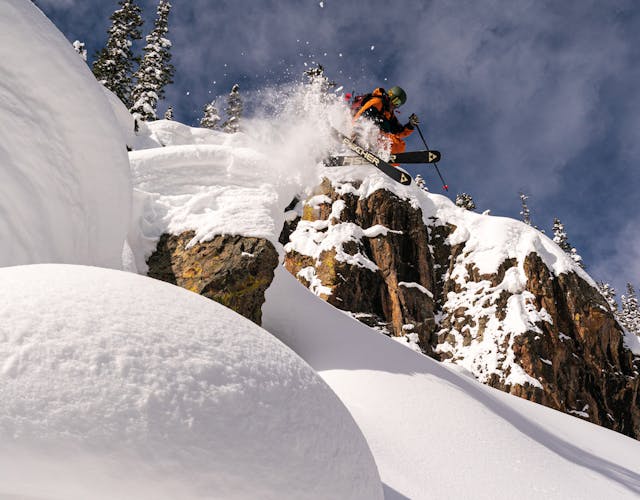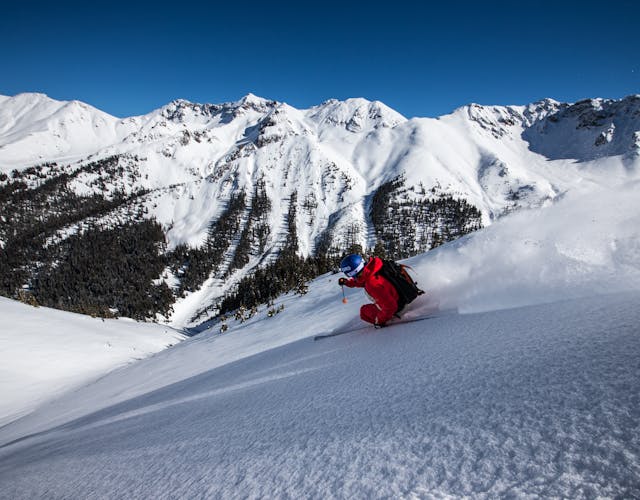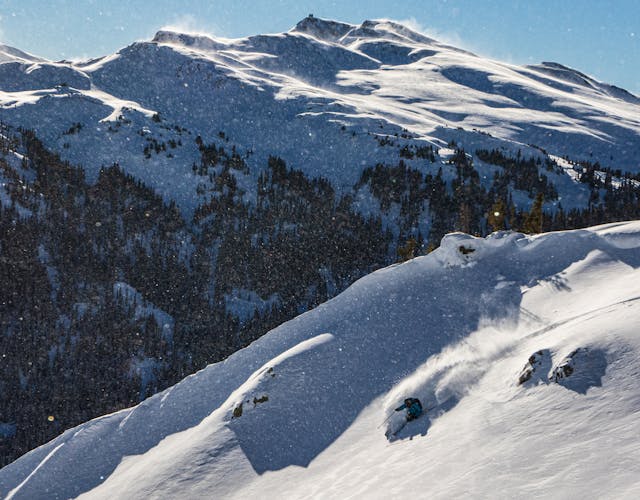Words by Sven Brunso, Images by Liam Doran
The Highway 550 corridor connecting Durango, Silverton, and Ouray provides easy access to some of America's highest mountains, but the snowy playground goes mostly untracked each winter. The mountains and the roadside attractions are easily accessible but covered with what many experts consider the world's most avalanche-prone snowpack. Surviving a winter of backcountry skiing in the San Juans requires a significant appreciation and understanding of the fickle snowpack and incredible patience. However, when the snow conditions are stable, there may be no better place on earth for those willing to earn their turns. If you love backcountry skiing and aren't afraid to put in some sweat equity for the best turns of your life, put the San Juans on your backcountry skiing bucket list.
(Image Above) The first big pass on Highway 550 is Coal Bank, which sits just north of Purgatory Resort and the town of Durango. In years with strong southwest atmospheric flow, Coal Bank Pass can have seemingly endless storms dropping multiple feet of cold smoke. Coal Bank Pass provides some excellent tree skiing during storm cycles. While Coal Bank is the lowest of the three significant passes on 550, the 10,640 feet (3,243 meters) of elevation above sea level is a good barometer of VO2 capacity right from the parking lot.
There is something special about leaving the car in the dark and climbing a skin track under the glow of a headlamp. When you first leave your vehicle's warmth, you quickly question your decision as frigid air fills your lungs. Boots feel rigid, not to mention aging knees and lower backs. However, even on mornings when the mercury reads -15F (-26C) on the dash readout, we were toasty warm by the first switchback and ditching a layer by the first saddle. As we approached treeline, the wind picked up and layers returned, reminding us that this mid-winter day would still be pretty chilly.
People often ask why we climb in the dark to shoot, but they soon understand when they see photos of skiing taken with the rising sun. Chairlifts rarely run early enough to get you to the top of the mountain ahead of the sun, so earning turns can deliver you to the perfect pedestal to play in the magic morning light. This turn was at 6:47 am on a late February morning. While the glowing orb does little to warm the air during the first few minutes of its arrival, its psychological warmth brings instant comfort. In the background, the wind whips snow around the summit of North Twilight Peak (13,084 feet; 3,988 meters).
Colorado isn’t known for pillow skiing, but, if you are willing to search, there are a few locations near Silverton blessed with ideal topography and rocky terrain to play on. The snow in the San Juans is often very low density and turns to facets (sugar-like snow) after periods of dry weather with frigid nights and sunny days. Facets on rocks can often lead to unfortunate “dry docking,” so it is often spring before the snow solidifies and reduces the risk of blown edges and knees when fluffing pillows.
Look no further than Silverton Mountain if you want a little help accessing the backcountry. This is America’s lone “Expert Only” ski experience. The chairlift helps you gain the first 2,000 vertical feet, but after that, you are on your own. While there is skiing directly from the lift, many of the runs involve bootpacking to access safe starting zones and runs in excess of 3,000 vertical feet. It’s best to think of the Silverton bootpack as the “Stairway to Heaven.” Due to the notoriously dangerous snowpack, most of the season is guided-only skiing at Silverton, but the guides will get you to the goods and keep you safe in the process. In addition to lift-served backcountry, Silverton offers heli-skiing, including single-run drops providing a sampler without breaking the bank.
Red Mountain Pass (11,100’) between Silverton and Ouray is the Holy Grail of road-accessible backcountry skiing in the San Juans. Endless options line either side of the pass, providing skiing from late October to June. Old-growth trees on the east side of the pass provide a sanctuary during big storm cycles and high avalanche danger. When the conditions are stable, however, there is simply not enough time to put a dent in all the options. While the highly-visible Red Mtn #3 is the most popular peak off the pass, other areas including as Chattanooga and Commodore Basin, will reward anyone willing to apply skins and ascend. The cherry on top of skiing on Red Mountain Pass is a post-ski soak in the Ouray Hot Springs.
The San Juans aren’t easy to get to, but you may never want to leave once you do. See you on the skintrack!
